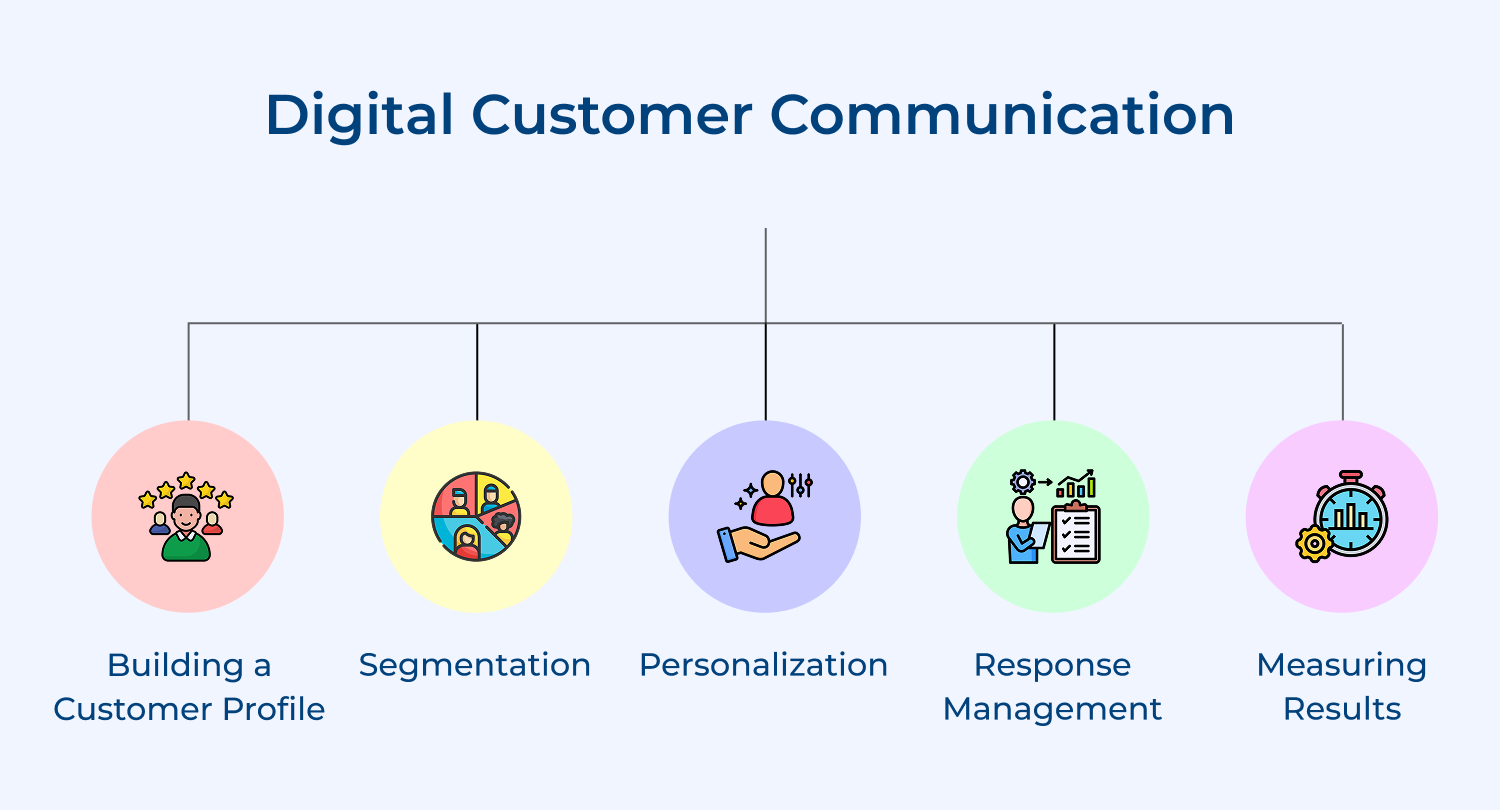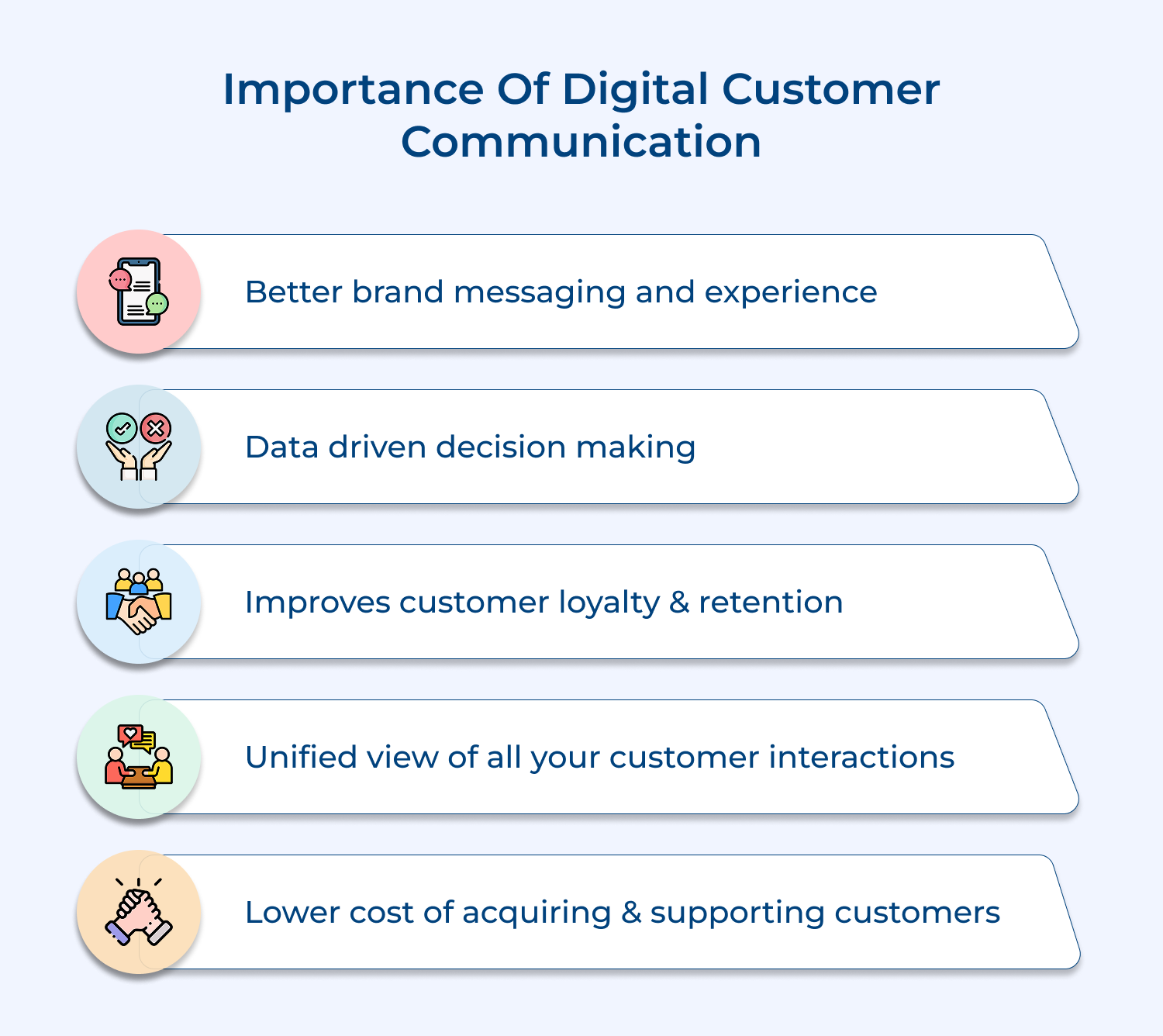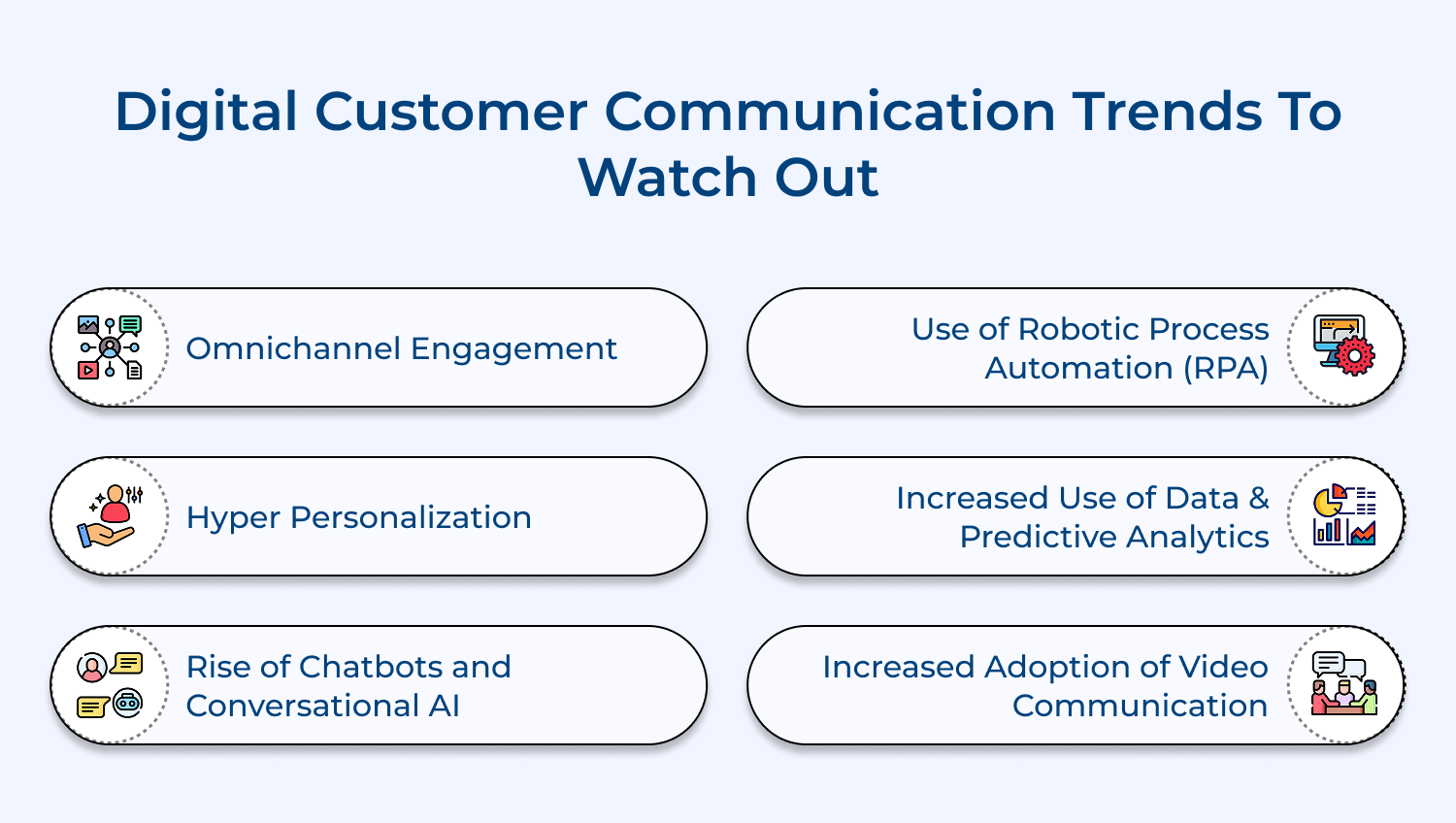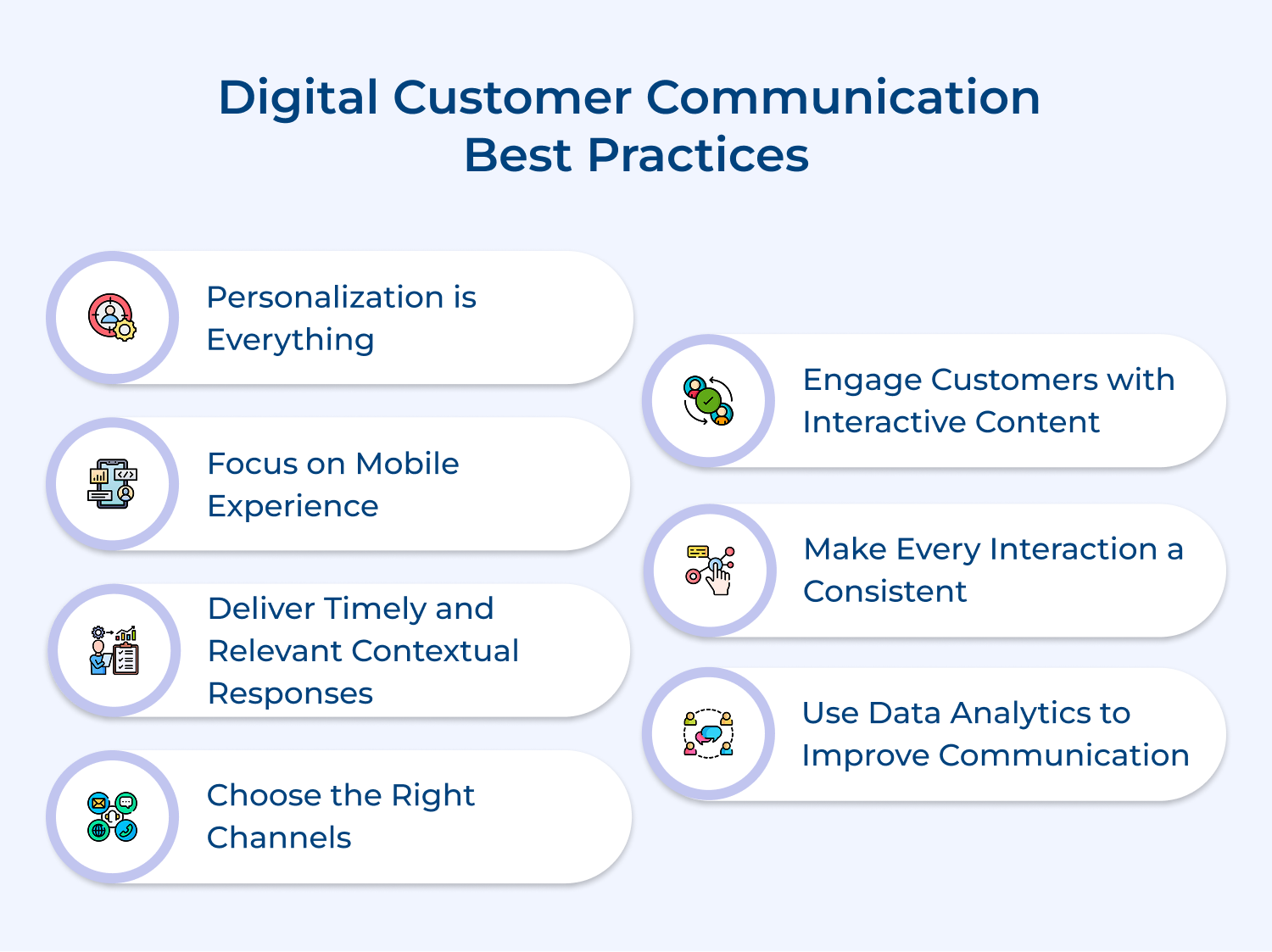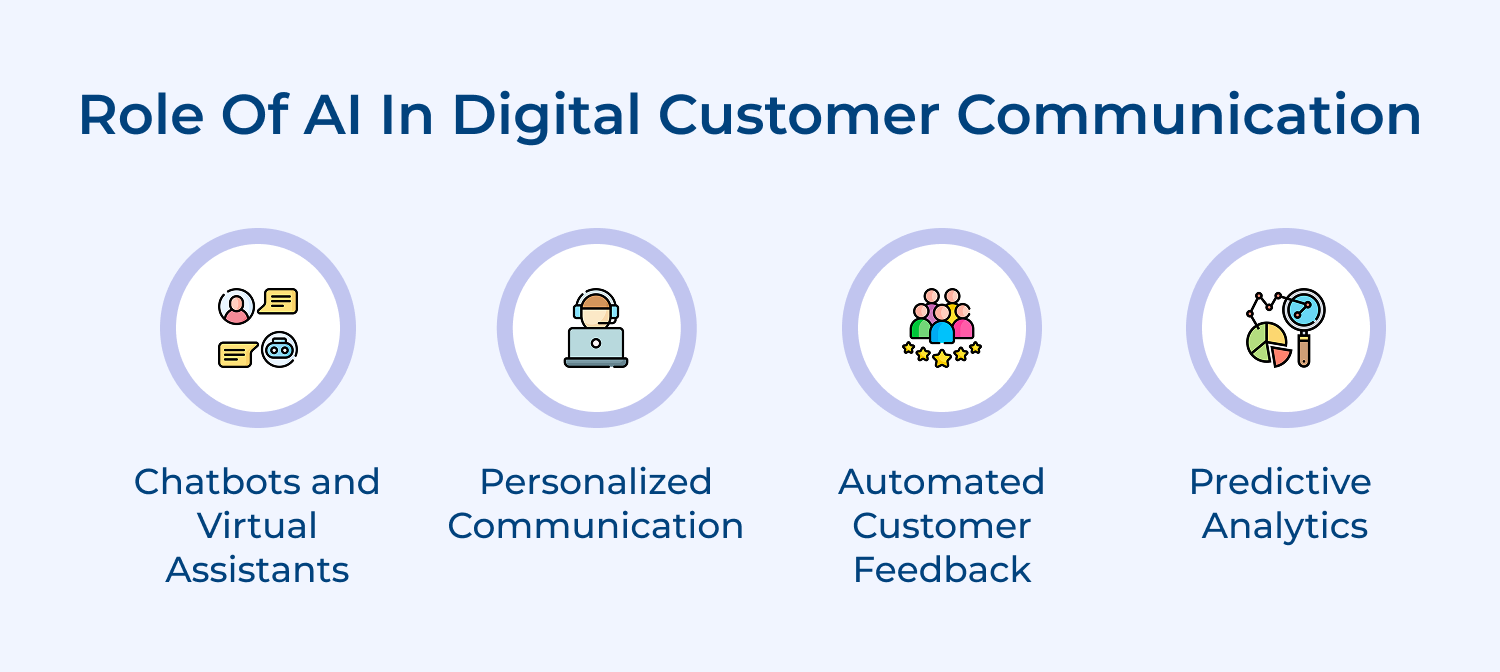1. Omnichannel Engagement
Omnichannel is the integration of all communication channels, including phone, email, social media, and chatbots, into a single customer experience.
A successful omnichannel strategy must provide customers with a consistent experience regardless of how they communicate with the brand.
Omnichannel engagement is essential because:
- Enables businesses to communicate with customers in real-time
- Reduces waiting times that customers look forward to
- Enhancing customer satisfaction
Companies that can offer a seamless and efficient cross-channel experience are more likely to attract and retain their customers than those that don’t.
2. Hyper Personalization
As there is abundance of data available in the digital world, businesses can use customer data to create personalized experiences that can impress customers.
Hyper-personalization involves collecting and analyzing data about individual customers’ behaviors, habits, and preferences, then using such data to create personalized messages, offers, and recommendations.
By understanding customers on an individual level:
- Businesses can enhance customer loyalty and increase sales.
- Hyper-personalization can involve targeted ads, shopping carts based on customer browsing history, customized promotions, and recommendations.
3. Rise of Chatbots and Conversational AI
Chatbots and conversational AI are transforming the way businesses interact with customers.
AI powered chatbots can communicate with customers in real-time, answering questions and resolving issues. They can also be used to send personalized messages and provide recommendations based on customer preferences.
Using conversational AI and chatbots help in delivering great digital customer communication by following ways:
- Freeing up staff time by automating repetitive tasks.
- Allowing support team to focus on higher-level tasks such as enhancing the customer experience.
- Chatbots can operate 24×7, which can prevent customers from having to wait for assistance.
It is becoming increasingly sophisticated, with chatbots using natural language processing (NLP) to understand and respond to customer inquiries.
4. Use of Robotic Process Automation (RPA)
Robotic Process Automation (RPA) is the use of software robots to automate repetitive tasks that are often performed manually.
Leveraging RPA can help businesses reduce handling time, improve accuracy, and enhance the overall efficiency of customer communications.
How RPA helps to deliver digital communication to customers?
- RPA can be used to automate repetitive tasks such as data entry, document processing, and email dispatching.
- It can also be used to manage customer inquiries and ensure that they are routed to the appropriate department or person.
5. Increased Use of Data & Predictive Analytics
Data and predictive analytics are becoming increasingly important for businesses to understand their customers.
By using data and predictive analytics, businesses can identify key customer trends, preferences, and behaviors. Such information can be used to create targeted communications and marketing campaigns that are tailored to specific customer segments.
Here is how predictive analytics helps digital client communication:
- Predictive analytics can be used to predict future customer behaviors based on past actions and data.
- It can help businesses can stay one step ahead of their competition, providing customers with a tailored experience that meets their needs.
6. Increased Adoption of Video Communication
Video communication has become a powerful tool for businesses to digitally connect with customers.
Using video based communication can be used to provide customers with a more engaging and informative experience. Videos can be used for product demos, tutorials, and testimonials, helping customers feel more informed and confident in their purchasing decisions.
With the increase of remote working, video communication has become more important than ever, providing businesses with the ability to communicate with customers regardless of physical distance.
Digital Customer Communication Best Practices
Digital customer communication is an essential aspect of modern businesses, and they must get it right to retain customers and attract new ones.
